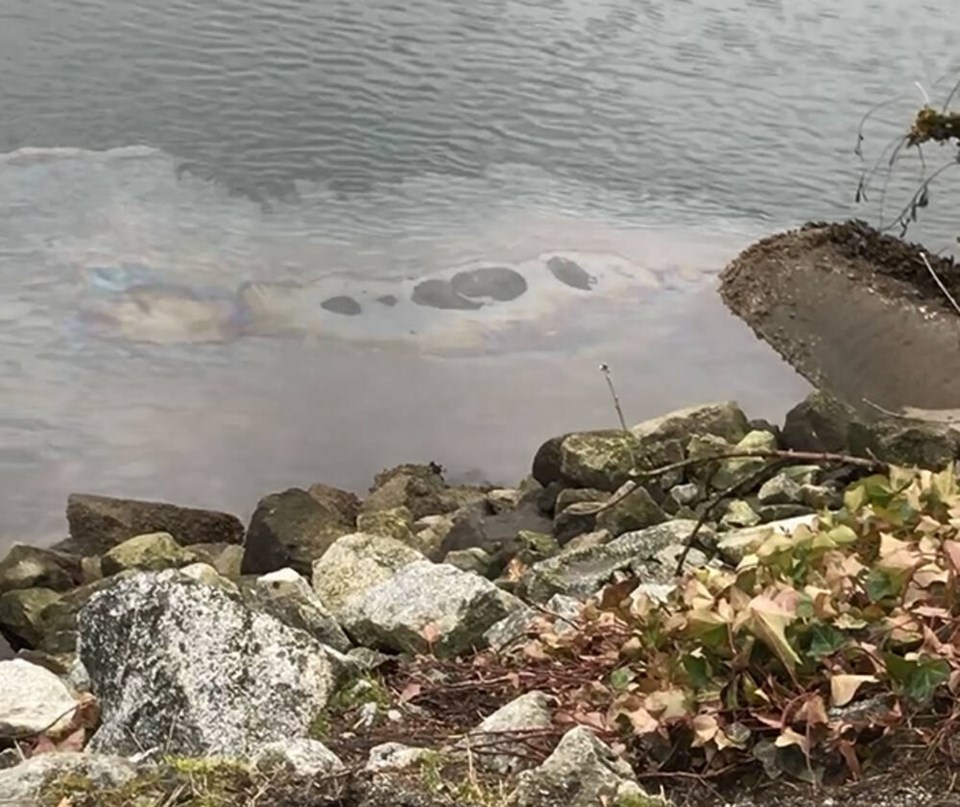Investigators looking into the near Western Stevedoring’s Lynnterm terminal have confirmed the substance is oil-based, but they say the amount leaking into the creek is below the provincial standard for environmental damage.
The sheen has been appearing during low tide near a stormwater outflow pipe about 35 metres up from the mouth of the creek. The company first became aware of it in late January.
In a statement released Wednesday, Lynnterm’s parent company says, “While it doesn’t impact our response, independent laboratory testing found hydrocarbons significantly below provincial standards. Notwithstanding the testing results, we are looking to eliminate the sheen.”
The ultimate source of the sheen still isn’t known, though.
“Activities include testing what we use at the site to what the laboratory results revealed is exiting the storm drain, and tracing in our system to identify the likely source and determine where and how it entered the storm drain system,” the statement reads. “In addition, we continue to monitor and clean out the storm drains using hydro vac trucks, and to maintain preventative catch basin inserts.”
North Shore Streamkeepers treasurer Glen Parker spoke with the company’s investigators and learned the amount of hydrocarbons present in their testing was less than 15 parts per million, not an emergency-sized spill but still a concern.
Parker said the amount of oil present wouldn’t be a threat to fish, at least not directly. Of greater concern is the caddisflies, which fish eat. They likely wouldn’t survive or lay eggs on the sheen, and waterfowl may not be able to swim if the oil gets on their feathers, he said.
Parker added there are other sources of contamination in the creek to consider when evaluating its environmental health overall.
“It’s the cumulative effects of 100 things like that that are impacting our streams,” he said. “If you have 20 of those (leaks) in the Lynn Creek estuary, then birds die and the bugs die, and the system doesn’t work.”
And he noted, other jurisdictions have stricter rules.
“There’s a minimum requirement but nature needs better than that,” he said. “Places like the Okanagan have cut it down to a third. California has it down to three (parts per million). Just meeting the minimum standard isn’t really good enough anymore.”


